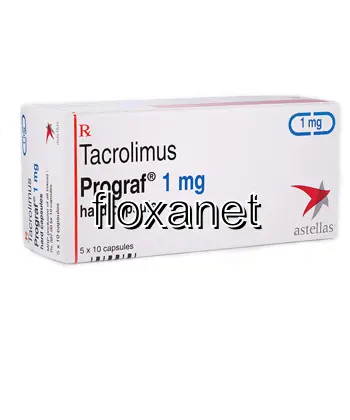| Package | Dosage | Price | Price per Dose | |
|---|---|---|---|---|
| Dosage: 0,5mg | ||||
| 90 pill | 0,5mg | €420.39 | €4.66 | |
| 60 pill | 0,5mg | €298.76 | €4.98 | |
| 30 pill | 0,5mg | €166.50 | €5.55 | |
| 20 pill | 0,5mg | €116.90 | €5.85 | |
| 10 pill | 0,5mg | €62.58 | €6.31 | |
| Dosage: 1mg | ||||
| 90 pill | 1mg | €590.45 | €6.57 | |
| 60 pill | 1mg | €422.76 | €7.05 | |
| 30 pill | 1mg | €249.16 | €8.29 | |
| 20 pill | 1mg | €185.39 | €9.26 | |
| 10 pill | 1mg | €103.91 | €10.44 | |
| Dosage: 5mg | ||||
| 20 pill | 5mg | €563.29 | €28.14 | |
| 10 pill | 5mg | €315.29 | €31.52 | |

Tacrolimus Description
Introduction to Tacrolimus
Tacrolimus is a potent immunosuppressive medication commonly used in organ transplantation to prevent rejection. It belongs to the class of drugs known as calcineurin inhibitors, which work by suppressing the activity of the immune system to avoid attacking transplanted organs. Tacrolimus has become an essential component of post-transplant care due to its effectiveness in reducing the risk of graft rejection. It is also sometimes prescribed to treat certain autoimmune conditions, where controlling immune responses is critical.
How Tacrolimus Works
The medication operates by inhibiting calcineurin, an enzyme that plays a crucial role in activating T-cells, a type of immune cell. By blocking this process, tacrolimus decreases the production of pro-inflammatory cytokines, thus dampening the immune response. This immunosuppressive effect helps the body accept the new organ or tissue and reduces the likelihood of rejection. However, because of its powerful suppression of immune activity, patients on tacrolimus must be carefully monitored to prevent infections and other complications.
Usage and Dosage
Tacrolimus is typically administered orally in the form of capsules or as a liquid solution. The exact dosage varies based on the patient's weight, medical condition, and response to therapy. Dosing usually starts immediately after transplantation and is gradually adjusted through blood level monitoring to ensure efficacy while minimizing side effects. It is important for patients to follow their healthcare provider’s instructions carefully and attend regular check-ups to monitor drug levels in the blood and kidney function.
Effectiveness and Benefits
Patients often find tacrolimus highly effective in preventing organ rejection. It has been shown to improve graft survival rates significantly when compared with older immunosuppressive agents. Its targeted mechanism reduces the overall immune activation more selectively, which can lead to fewer side effects related to generalized immune suppression. Many recipients experience a smoother recovery and better long-term outcomes with tacrolimus as part of their immunosuppressive regimen.
Potential Side Effects
While tacrolimus is effective, it does come with potential side effects. Common issues include tremors, headaches, nausea, and gastrointestinal discomfort. More serious but less frequent adverse reactions include kidney toxicity, hypertension, increased susceptibility to infections, and neurotoxicity. Because of these risks, patients require regular blood tests to monitor kidney function, blood pressure, and drug levels. Managing side effects often involves dose adjustments or additional medications to mitigate risks.
Precautions and Interactions
Patients taking tacrolimus should inform their healthcare provider about all medications they are using, as many drugs can interact with it. Drugs that can increase tacrolimus levels include certain antifungals and antibiotics, which might elevate toxicity risk. Conversely, some medications may decrease its effectiveness, risking graft rejection. It is also recommended to avoid grapefruit juice, which can interfere with the drug’s metabolism. Pregnant or breastfeeding women should discuss the potential risks and benefits with their doctor, as safety data are limited.
Conclusion
Tacrolimus remains a cornerstone in transplantation medicine due to its high efficacy in preventing organ rejection. However, its use requires careful management to maximize benefits and reduce risks. Regular monitoring, adherence to prescribed doses, and close communication with healthcare providers are essential for patients using this medication. When used correctly, tacrolimus can significantly improve the outcomes for organ transplant recipients and contribute to a better quality of life post-transplantation.
